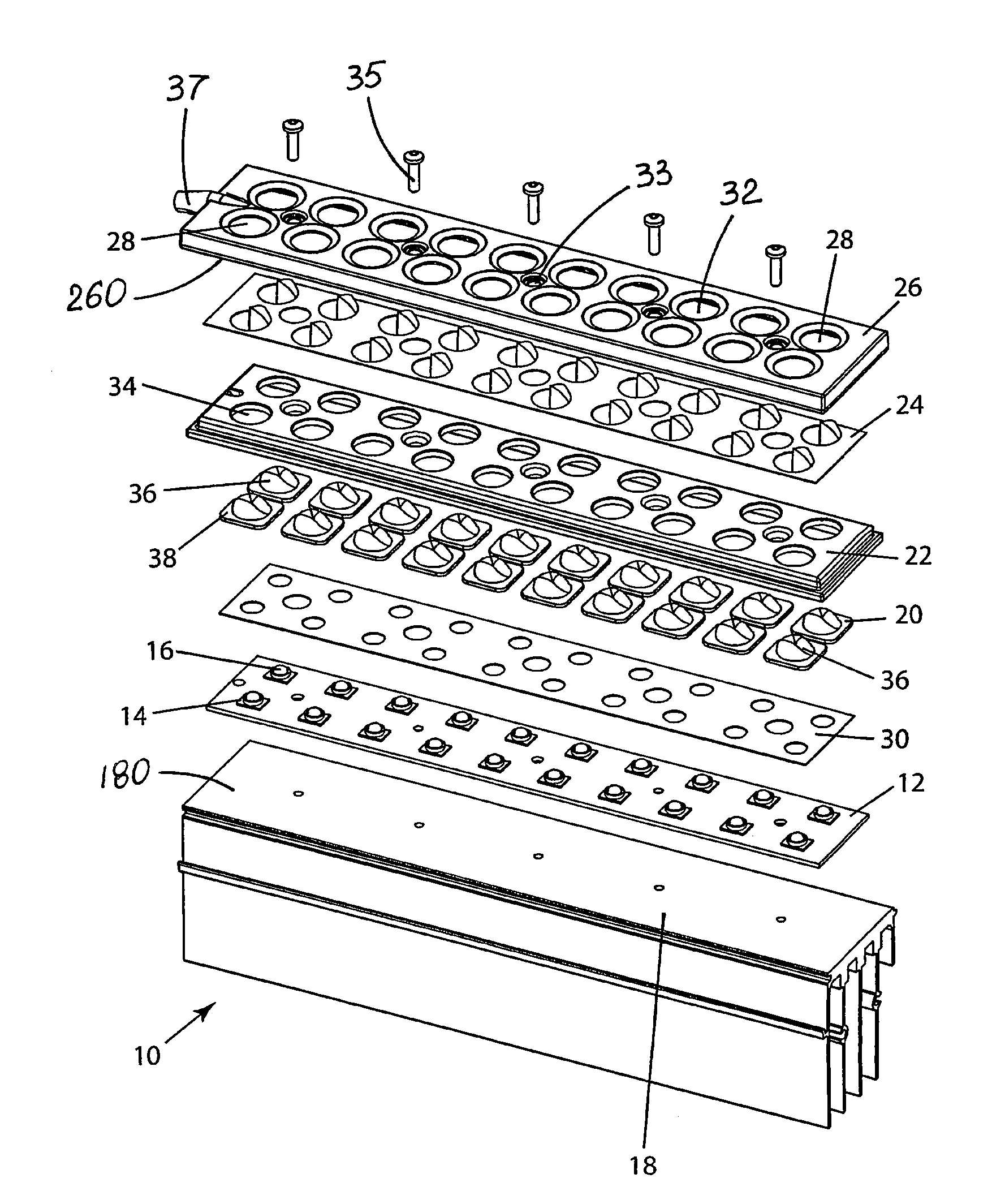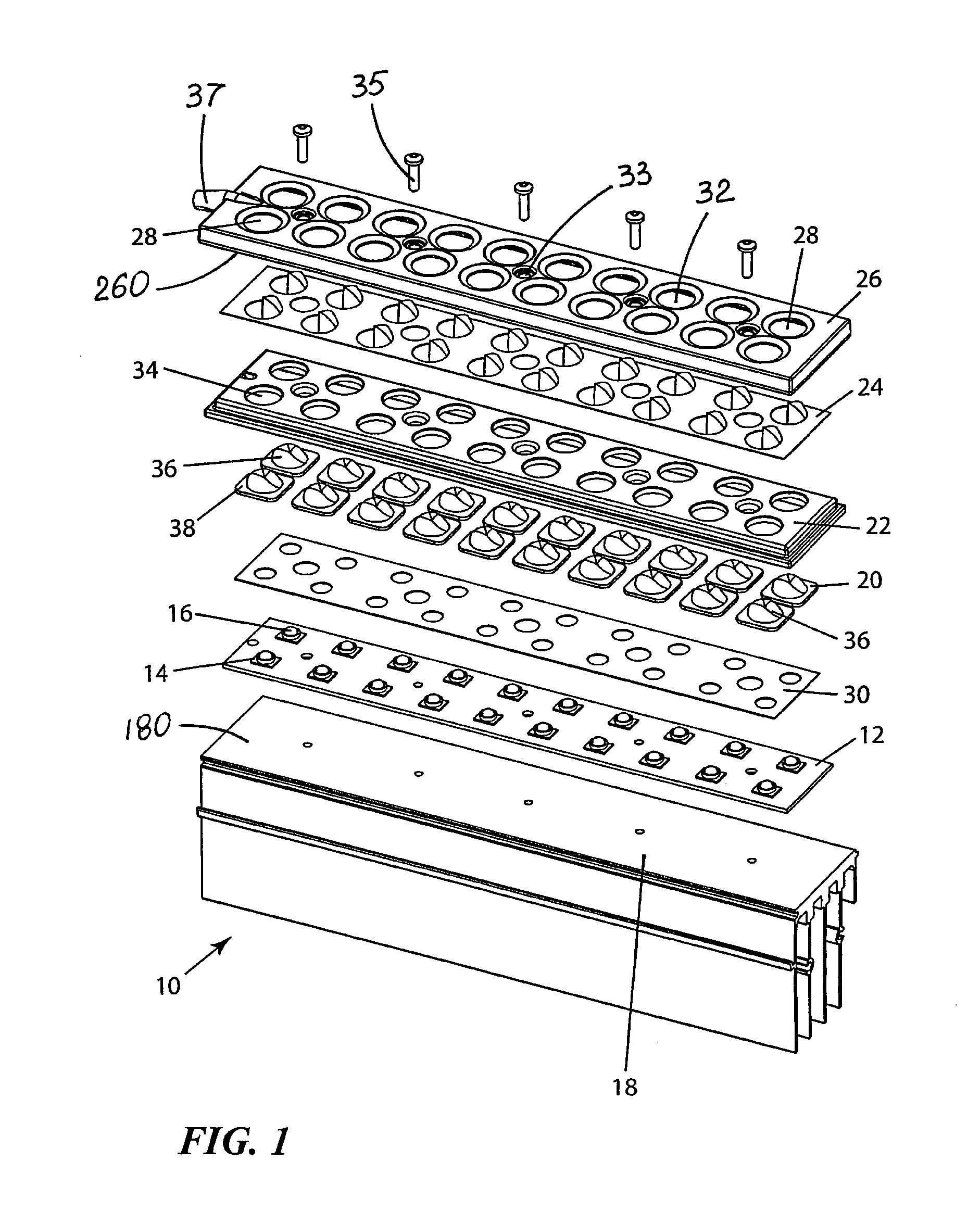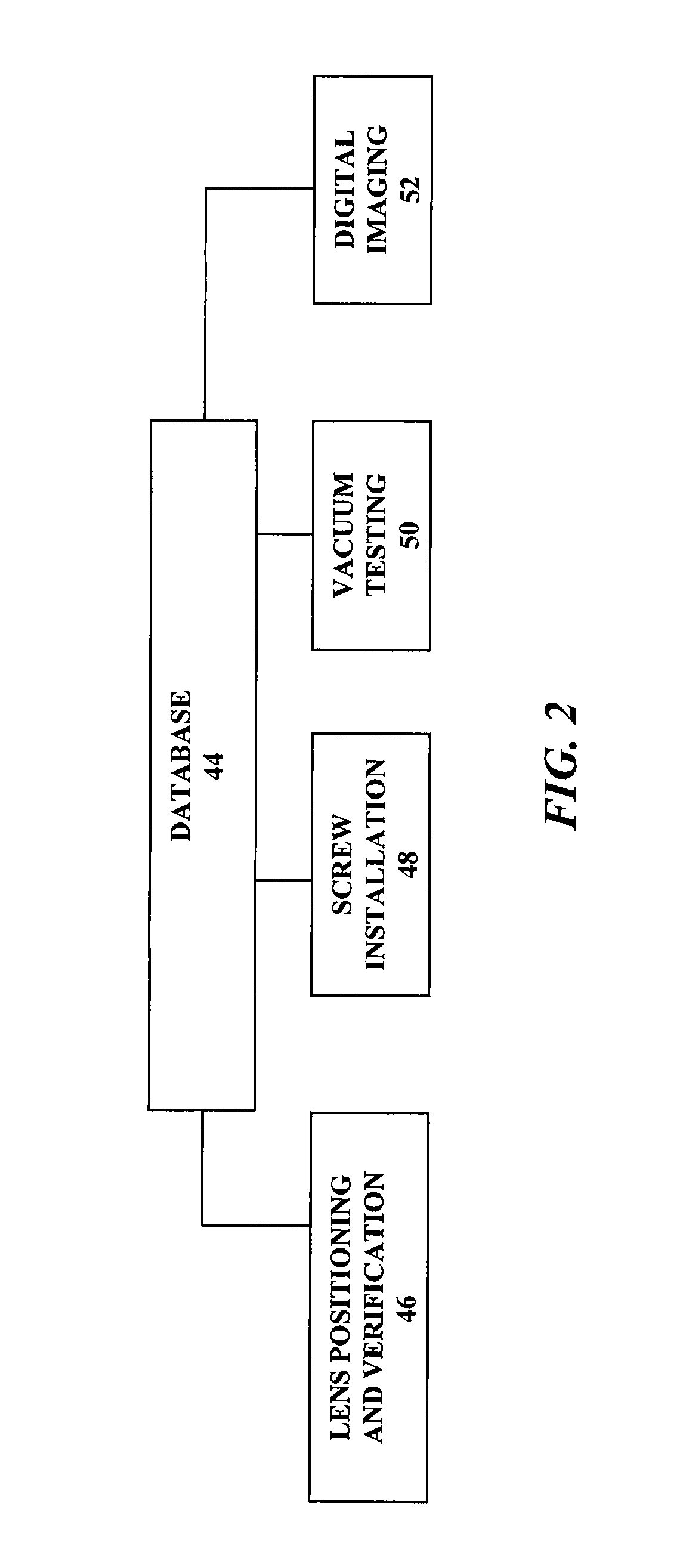Method for LED-module assembly
a technology of led modules and led-supporting electronics, which is applied in the direction of lighting and heating apparatus, semiconductor/solid-state device testing/measurement, instruments, etc., can solve the problems of high cost due to high complexity, particularly difficult to keep leds and led-supporting electronics in water/air tight environments, and difficult to meet the requirements of high-luminance light fixtures using led modules as light sources
- Summary
- Abstract
- Description
- Claims
- Application Information
AI Technical Summary
Benefits of technology
Problems solved by technology
Method used
Image
Examples
Embodiment Construction
[0031]FIGS. 1, 3 and 4 illustrate an LED module 10 which includes a mounting board 12 with a plurality of LED emitters 14 thereon. Illustrated LED emitters 14 include primary lenses 16. A secondary LED lens 20 is positioned over each emitter 13. Mounting board 12 is connected to a base portion which is shown as a heat sink 18. One or more LED modules 10 may be used as light sources in various LED lighting fixtures. LED module 10 includes a sealing device shown in the form of a resilient member 22 against which LED lenses 20 are positioned. Resilient member 22 yieldingly constrains secondary lenses 20 and accommodates the movement of secondary lenses 20 caused by thermal expansion during LED operation. Such expansion is mostly caused by primary lenses 16 in the embodiment shown in FIGS. 1 and 4.
[0032]FIGS. 1 and 4 show resilient member 22 in the form of a gasket layer between a cover 26 and mounting board 12. Gasket 22 has a plurality of gasket apertures 34 and is preferably made fro...
PUM
 Login to View More
Login to View More Abstract
Description
Claims
Application Information
 Login to View More
Login to View More - R&D
- Intellectual Property
- Life Sciences
- Materials
- Tech Scout
- Unparalleled Data Quality
- Higher Quality Content
- 60% Fewer Hallucinations
Browse by: Latest US Patents, China's latest patents, Technical Efficacy Thesaurus, Application Domain, Technology Topic, Popular Technical Reports.
© 2025 PatSnap. All rights reserved.Legal|Privacy policy|Modern Slavery Act Transparency Statement|Sitemap|About US| Contact US: help@patsnap.com



